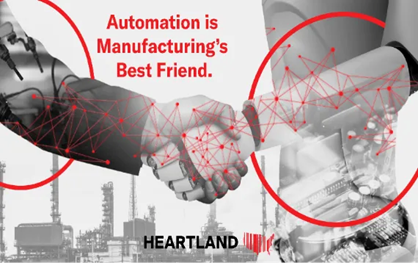
Understanding the Cost of Customer Acquisition and Retention
Nov 21, 2023
At the center of every business goal is one shared target: customer satisfaction. Your workforce, technology systems, and countless hours of effort and planning all work together to build customer loyalty and establish long-lasting relationships. With this in mind, it’s no surprise that manufacturers can spend thousands of dollars on customer acquisition and retention since they must consider the expenses of:
- Storing high-demand stock
- Coordinating with delivery teams and retailers
- Tracking purchase patterns to avoid overproduction
- Customer service for returned products
Despite these obstacles, experts do not recommend compromising on customer-centric strategies. As a result, knowledgeable solution developers and top technology players work in tandem to create adaptable strategies that prioritize the customer experience to attract new business and strengthen customer retention. A popular solution is direct-to-customer (DTC) shipping since it accelerates fulfillment and lowers operational costs while satisfying customers.
What is Direct-to-Customer Shipping?
DTC shipping is a supply chain strategy that involves transporting goods directly to end-users or customers, bypassing traditional distribution channels such as wholesalers and brick-and-mortar retailers. Popular in the e-commerce space, DTC has contributed to the demand for faster, more convenient, and personalized shipping.
With DTC shipping, manufacturers erase intermediaries and gain more control over their product offerings, pricing, and customer relationships. By selling directly to consumers, they also gather valuable data about consumer preferences, behavior, and feedback, which results in the following benefits:
- Maximized Inventory Control – A real-time perspective of customer purchases allows manufacturers to produce the correct number of products, thus avoiding overproduction and stockouts.
- Faster Order Fulfillment – Instead of relying solely on distributors, manufacturers can work with third-party logistics services to ship orders directly to the customer, eliminating long lead times and trimming touchpoints during shipping.
- Improved Customer Support – By communicating directly with customers, manufacturers have more control of their brand presentation as they provide customer support without third-party assistance.
An efficient DTC strategy involves close communication with suppliers, manufacturers, and warehouses to adjust production and storage without increasing costs. Real-time data access and communication ultimately empower businesses to reduce unnecessary costs while providing superior service to their new and current customers.
How Does Direct-to-Customer Shipping Lower Operational Costs?
One of the key advantages of DTC shipping is that it can strengthen lean manufacturing goals with fewer expenses. By reaching customers directly, manufacturers eliminate additional expenses through:
- Intelligent Use of Storage Space – Warehouse storage space can range anywhere from $1 to $7 per square space. As a result, DTC solutions seek to minimize overproduction, so manufacturers don’t have to pay extra for inventory they won’t need. With DTC shipping, manufacturers use data analytics to ensure that they always have the right amount of inventory on hand to meet customer demand, empowering them to use their warehouse space wisely. This, in turn, lowers expenses by reducing the cost of carrying excess inventory and increasing customer satisfaction.
- Increased Customer Loyalty – Previous studies show that 88% of consumers are willing to pay more for faster fulfillment. Moreover, same-day shipping has been a differentiator in increasing customer loyalty since consumers seek out faster shipping with the same avidness as low prices. DTC helps to accelerate shipping so businesses can meet customer expectations.
- Intelligent Forecasting – Whether through customer support or purchase patterns, close communication with customers provides manufacturers with insightful data about their preferences. SKUs can be evaluated based on collected data to decide if production should continue. This type of forecasting has also contributed to successful nearshoring plans as businesses analyze where customers are located and available resources on hand to decrease fulfillment costs.
Related: See how digital twins empower intelligent forecasting on our blog.
4 Indispensable Hardware Systems to Integrate into your DTC Solution
Before committing to a DTC solution, it is recommended that manufacturers meet with a solution provider like Heartland to verify if this system will fit seamlessly into their current infrastructure. By coordinating with multiple leading OEMs, Heartland’s team of technicians can help you integrate versatile technologies into your network to enable DTC shipping and strengthen your main workflows. Leading technologies include:
-
Automated Mobile Robots (AMRs)
AMRs help automate the process of storing and retrieving goods, maximizing inventory control by reducing the need for manual labor and the risk of human error. Moreover, AMRs optimize storage space by utilizing vertical storage, which lowers storage costs and increases the efficiency of order fulfillment. Lastly, because robotics take less time to retrieve goods, they help speed up the delivery process to increase customer satisfaction.
-
Voice Technology
Praised for its ease of use and flexibility, voice technologies expand worker efficiency without overbearing training modules. By leveraging natural muscle movement, voice-based systems direct workers through pick routes audibly in the language of their preference. Furthermore, voice systems can also be paired with hands-free computing to boost fulfillment speed and safeguard accuracy through a digitized platform, all delivered in a rugged yet lightweight system tailored to your workforce.
-
RFID Systems
Combining tags, readers, and antennas in one comprehensive system, RFID tracking improves inventory control by providing real-time data on the location and movement of goods. Moreover, RFID systems can optimize warehouse space by reducing the need for manual inventory counts and increasing the accuracy of inventory data. Additionally, RFID systems improve order fulfillment by lowering the risk of picking the wrong items or quantities, building customer loyalty.
-
Barcode Scanning Systems
BARCODE SCANNING SYSTEMS improve inventory control by providing real-time data on the location and movement of goods. Moreover, barcode scanning systems enhance warehouse space by diminishing the need for manual inventory count, preserving data accuracy. In the end, barcode scanning provides a simple way to speed up throughput rates without compromising accuracy, ultimately preventing costly returns.
Related: Explore automation’s role in enhancing the manufacturing industry.
By investing in the right hardware systems, manufacturers can trim costs, increase productivity, and gain a competitive advantage in the market.
Looking for More Ways to Lower Customer Acquisition and Retention Costs?
The Digital Age is full of new opportunities and challenges. While it has brought businesses closer to their customers, it has also generated a wave of consumer expectations set to redefine the supply chain. Set up a quick meeting with our automation team to keep exploring new tactics to lower operational costs and improve customer loyalty.




